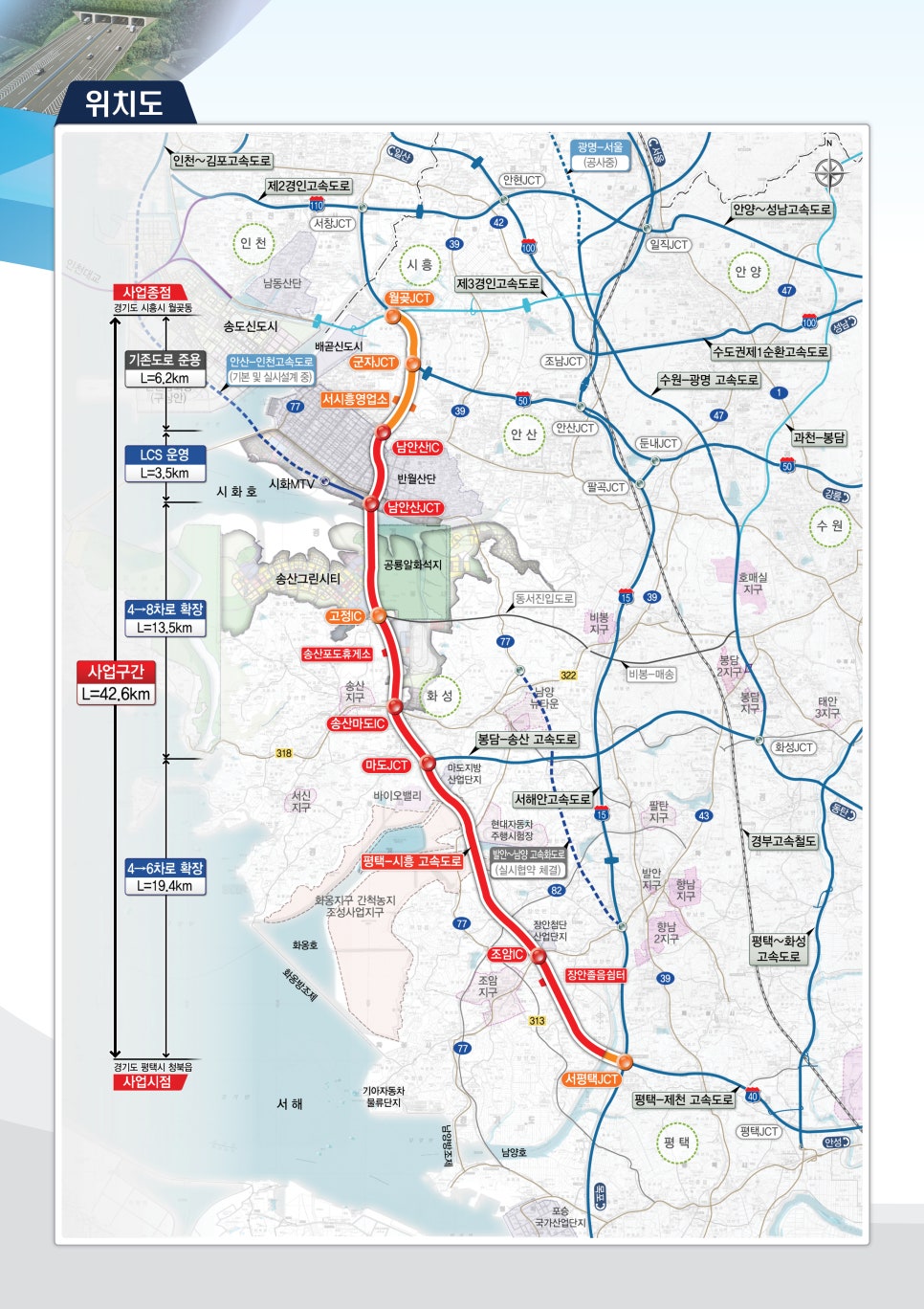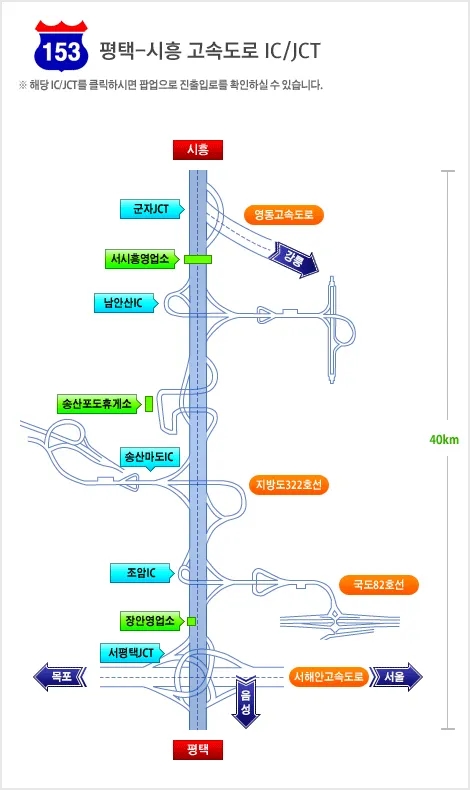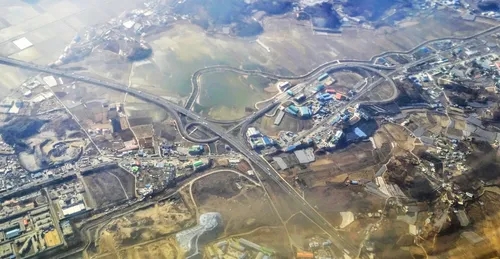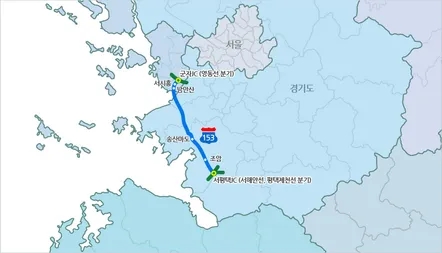Table of Contents
- Key Projects for Alleviating Metropolitan Traffic Congestion and Enhancing Industrial Logistics Efficiency
- First 'Improvement Operation Type' Case of Existing Private Expressway... Turning Point in Private Investment Project System
- Scheduled to Start Construction in the Second Half of 2028, Goal for Completion by the End of 2033
- Major Traffic Hubs Expected to Benefit: Joam, Mado, Namansan, Wolgot ICs
- Conclusion: Beginning of a New Paradigm in Private Road Projects
- Frequently Asked Questions (FAQ)
Key Projects for Alleviating Metropolitan Traffic Congestion and Enhancing Industrial Logistics Efficiency

The expansion project of the Pyeongtaek-Siheung private expressway is officially starting. The Ministry of Land, Infrastructure and Transport announced that from July 25 to November 24, 2025, a third-party proposal announcement will be conducted to select the project implementer.
This project aims to reduce traffic congestion in the southwestern metropolitan area and enhance the functions of the national trunk road network. It is a large-scale infrastructure project that expands the current four-lane expressway section to six to eight lanes, which is expected to greatly contribute to improving traffic flow in the future.
First 'Improvement Operation Type' Case of Existing Private Expressway... Turning Point in Private Investment Project System

The expansion section corresponds to 36.4 km out of a total of 42.6 km, extending from Seopyeongtaek JCT to Namansan IC. This route is established as a core axis of industrial logistics, and increasing capacity is essential to effectively respond to future demands such as the development of Song-san Green City and the increase in cargo volume at Pyeongtaek Port and Dangjin Port.
This project is the first improvement operation type private investment project in Korea, where private capital is injected into an already operating expressway for expansion and integrated operation. With the reform of the system in October 2024, the improvement operation type project, which was previously possible only after the end of operation, has been revitalized, and this project is noted as the first case.
This change is seen as an important turning point that deviates from the traditional new investment approach centered on existing private roads, expanding private capital involvement in aging and congested infrastructure. It is expected that this will contribute to relieving traffic jams and enhancing safety in the future.
Scheduled to Start Construction in the Second Half of 2028, Goal for Completion by the End of 2033

The Pyeongtaek-Siheung private expressway expansion project began with a private proposal in July 2019. It has undergone eligibility assessments, strategic environmental impact assessments, and deliberations from the private investment review committee, and ultimately received final approval from the Ministry of Economy and Finance on July 8, 2025.
With the announcement of the third-party proposal, a preferred negotiating party will be selected in January 2026. Construction is planned to start in the second half of 2028, with the road expected to be opened by the end of 2033. This project is anticipated to significantly improve the transportation infrastructure in the southwestern metropolitan area.
Major Traffic Hubs Expected to Benefit: Joam, Mado, Namansan, Wolgot ICs

The expansion section includes many access points connecting major industrial complexes and cities such as Joam IC, Mado IC, Namansan IC, and Wolgot JCT. Consequently, regional accessibility is expected to improve significantly, and the efficiency of logistics transportation will also increase.
In particular, it is anticipated that this will resolve traffic congestion issues in the section from Seopyeongtaek to Namansan and enhance connectivity with future metropolitan transport systems. Such changes will positively impact the local economy.
Conclusion: Beginning of a New Paradigm in Private Road Projects

The expansion project of the Pyeongtaek-Siheung expressway not only signifies road expansion but also represents a symbolic project that indicates a new shift in private investment approaches.
The 'Improvement Operation Type' method effectively utilizes existing infrastructure and combines private capital efficiency, which is expected to yield positive results such as budget savings, project speed enhancement, and increased private participation.
This trend is anticipated to provide important direction for future national infrastructure policy.
#PyeongtaekSiheungExpressway, #ExpresswayExpansion, #ImprovementOperationTypePrivateInvestmentProject, #MinistryofLandInfrastructureandTransport, #ThirdPartyProposalAnnouncement, #SeopyeongtaekJCT, #WolgotJCT, #JoamIC, #MadoIC, #NamansanIC, #IndustrialLogistics, #AlleviationofMetropolitanTrafficCongestion, #PrivateInvestmentProject, #RoadExpansionProject, #PyeongtaekPort, #DangjinPort, #SongSanGreenCity, #SouthwestTransportationNetwork, #ExpresswayPrivateInvestmentProject, #RoadCongestionAlleviation, #2028ConstructionStart, #2033PlannedOpening, #MinistryofEconomyandFinance, #InfrastructureInvestment, #RoadInfrastructure, #PublicInfrastructurePrivateInvestmentProject, #MetropolitanTransportationPlan, #IndustrialComplexAccessibility, #EightLaneRoad, #TrafficCongestionImprovement, #StrategicRoadNetwork
Frequently Asked Questions (FAQ)
Q. What is the main purpose of the Pyeongtaek-Siheung private expressway expansion project?
The main purpose is to alleviate traffic congestion in the southwestern metropolitan area and enhance industrial logistics efficiency.
The Pyeongtaek-Siheung private expressway expansion project aims to reduce traffic congestion in the southwestern metropolitan area and strengthen the function of the national trunk road network. It is designed to improve traffic flow by expanding the current four-lane road to six to eight lanes and plays a key role in industrial logistics. This will effectively respond to future demands such as the development of Song-san Green City and the increase in cargo volume at Pyeongtaek Port and Dangjin Port.
Q. What are the specific sections and scale of this expansion project?
It will expand 36.4 km of the total 42.6 km section from Seopyeongtaek JCT to Namansan IC.
The expansion section covers a total of 42.6 km, with 36.4 km extending from Seopyeongtaek JCT to Namansan IC. This route plays a crucial role as a key hub for industrial logistics transport and is expected to enhance the efficiency of logistics transportation and regional accessibility significantly through increased road capacity. Moreover, major traffic hubs such as Joam IC, Mado IC, Namansan IC, and Wolgot JCT will be included, which will aid in connecting with metropolitan transport systems.
Q. What is an improvement operation type private investment project, and what significance does it have in this project?
It is the first case in Korea of expanding and operating existing expressways with private capital.
An improvement operation type private investment project is a method where private capital is invested in existing operating expressways to conduct road expansion and integrated operation. The Pyeongtaek-Siheung expressway expansion project is noted as the first improvement operation type case after the reform of the system in October 2024, moving away from the traditional new investment approach centered on existing private roads and expanding private capital involvement in aging and congested infrastructure. This is expected to result in positive outcomes such as budget savings, accelerated project speed, and enhanced private investment.
Q. What is the schedule for the project implementation and its current status?
The third-party proposal announcement will start in July 2025, with construction beginning in the second half of 2028 and expected completion by the end of 2033.
The Pyeongtaek-Siheung private expressway expansion project began with a private proposal in 2019, followed by eligibility assessments, environmental impact assessments, and private investment reviews, ultimately receiving final approval from the Ministry of Economy and Finance in July 2025. The third-party proposal announcement for selecting the project implementer will be conducted for 120 days from July 25 to November 24 of the same year, aiming to select the preferred negotiating party in January 2026. Construction is expected to begin in the second half of 2028, with completion and opening set for the end of 2033.
Q. What impact will this project have on the local economy and transportation system?
Improvements in accessibility and logistics efficiency are expected to relieve traffic congestion and revitalize the economy.
The expansion section includes key traffic hubs such as Joam IC, Mado IC, Namansan IC, and Wolgot JCT, significantly enhancing accessibility. This will strengthen connectivity between industrial complexes and cities, increasing the efficiency of logistics transportation and contributing to alleviating traffic congestion issues. Furthermore, it will enhance connections with metropolitan transport systems, promoting local economic development and safety. Overall, the transportation infrastructure in the southwestern metropolitan area is expected to significantly improve.